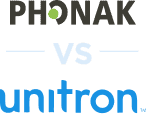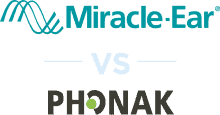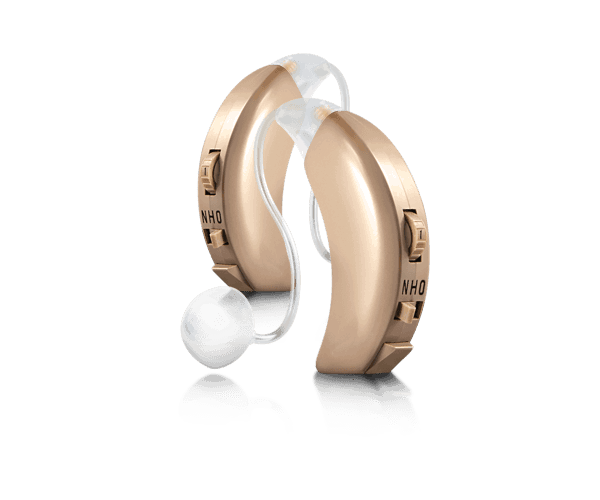
MDHearing Costs: Our In-Depth Analysis

Typical prescription hearing aids cost $2,000 to $7,000, but MDHearing sells OTC devices for as cheap as $297 a pair. While these low costs come with some caveats (no Bluetooth streaming here), they can be an excellent solution for mild-to-moderate hearing loss.
In this guide to MDHearing costs, we’ll review each of the company’s different devices and provide a detailed overview of pricing, warranties, and refund policies.
MDHearing devices are affordable; however, most models lack smartphone connectivity and support from remote hearing specialists. To find OTC hearing aids with these features, read our guide to this year’s best hearing aids.
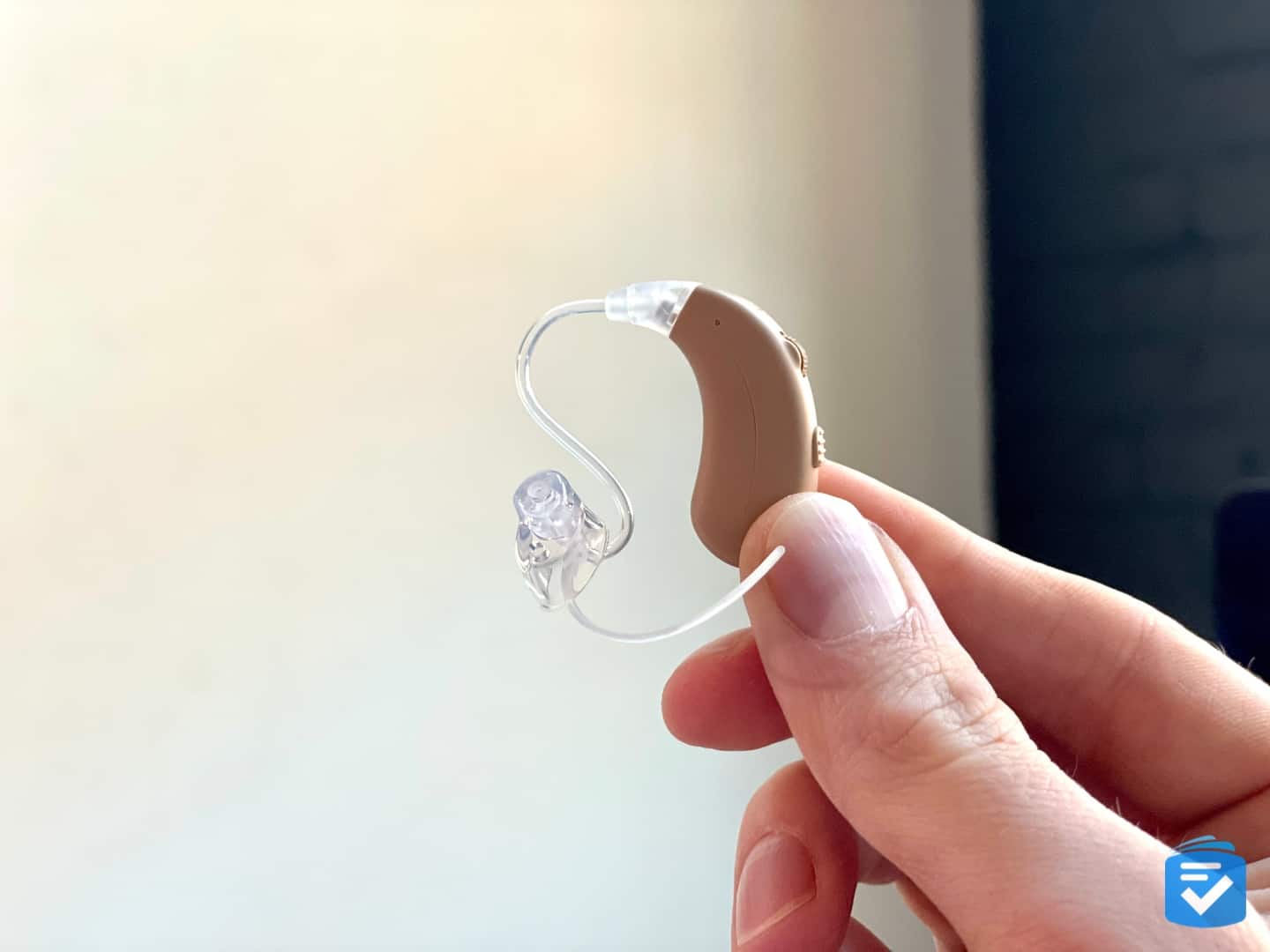
Pros and Cons of MDHearing Hearing Aids
MDHearing Pros
- Highly Affordable: With hearing aids starting at $297, MDHearing offers some of the most affordable hearing aids currently on the market.
- Online Purchases: Unlike many hearing aid companies, which require you to visit a hearing professional to purchase their devices, MDHearing offers over-the-counter hearing aids through its website.
- Rechargeable Options: All MDHearing models feature rechargeable batteries, which is great for older adults tired of purchasing costly 312 batteries.
- Warranties: All MDHearing models have a one-year warranty, and the VOLT MAX can be upgraded to a two-year one.
- 24/7 Remote Care: Even after your hearing aid purchase, you’ll have access to a team of hearing specialists available 24 hours a day.
MDHearing
- Minimal Features: MDHearing devices’ impressively low cost has some drawbacks, one of which is that most of them lack advanced features such as iPhone compatibility, save for the VOLT MAX, and none of the hearing aids work with Bluetooth.
- No Tinnitus Therapies: Unlike Jabra Enhance, which makes some of our favorite hearing aids for tinnitus, MDHearing devices don’t have specific programs for these features. That being said, there is no cure for tinnitus, only masking noises that can lessen its effects.1

MDHearing at a Glance
MDHearing hearing aids are FDA-registered, medical-grade devices specifically designed for those with mild to moderately severe hearing loss. Shopping online or by phone is simple, and they have a dedicated U.S.-based customer service center with hearing instrument specialists to guide buyers through every step. The company offers financing with monthly payment plans and a free 45-day home trial.
Currently, MDHearing offers six devices: AIR, NEO, NEO XS, NEO XS PRO, VOLT 4, and VOLT MAX. All of the devices are rechargeable, but they have slightly different features.
MDHearing AIR
An entry-level digital hearing aid with basic noise reduction and feedback cancellation, the AIR features dual microphones and is suitable for common listening environments. While it lacks advanced features such as smartphone connectivity, it offers adequate amplification for mild-to-moderate hearing loss.
The AIR has four different environment settings, which you control via the buttons on the back of the device. The device uses rechargeable batteries, and its simple interface makes it appropriate for users who prefer straightforward operation, though the limited customization options may not suit those with more complex hearing needs.
MDHearing NEO
The NEO represents MDHearing’s move toward modern hearing technology, offering digital sound processing in a smaller form factor. This rechargeable in-ear model features noise reduction and feedback suppression algorithms. However, unlike the AIR and other models, this device only has one environment setting.
The NEO is suitable for mild-to-moderate hearing loss, and the device provides good value for users seeking modern features without the premium price tag of flagship models. Plus, it’s nearly invisible when worn.
MDHearing NEO XS
Even smaller than the NEO, the NEO XS model prioritizes discretion while maintaining core functionality. This device offers similar digital processing capabilities in a smaller housing; however, it has four different environment settings and improved feedback cancellation. Additionally, its charging case can provide up to 100 additional hours of charge on the go.
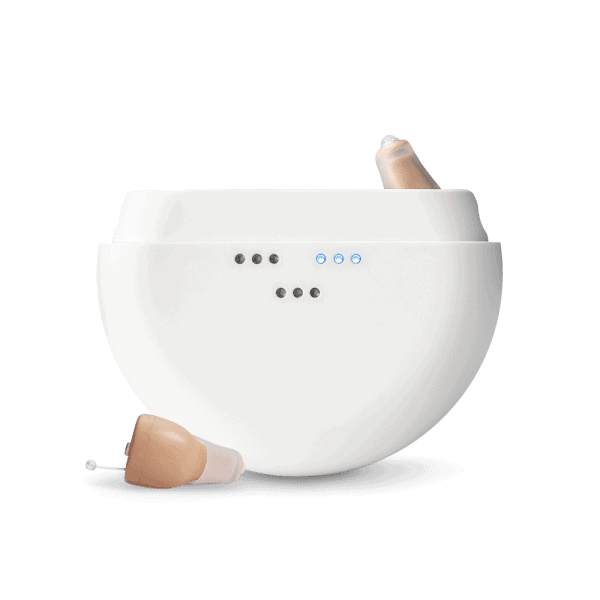
MDHearing NEO XS PRO
If you want the small form factor of the NEO series but the smartphone compatibility of the VOLT MAX, then the NEO XS PRO is likely your ideal hearing aid. This device features four environment settings, improved feedback cancellation, rechargeable batteries, and smartphone connectivity via the MDHearing app. This allows you to control volume and switch settings without touching your hearing aids themselves.
MDHearing VOLT 4
The MDHearing VOLT 4 combines robust amplification with versatile features in a traditional BTE form factor. Its larger size accommodates more powerful components suitable for mild-to-moderate hearing loss.
The device offers a 20-hour battery life and easy-to-use controls. Additionally, its advanced feedback cancellation system allows for higher gain without whistling. While lacking some premium features found in the VOLT MAX, it provides reliable performance and durability. The larger buttons and controls make it particularly suitable for users with dexterity challenges.
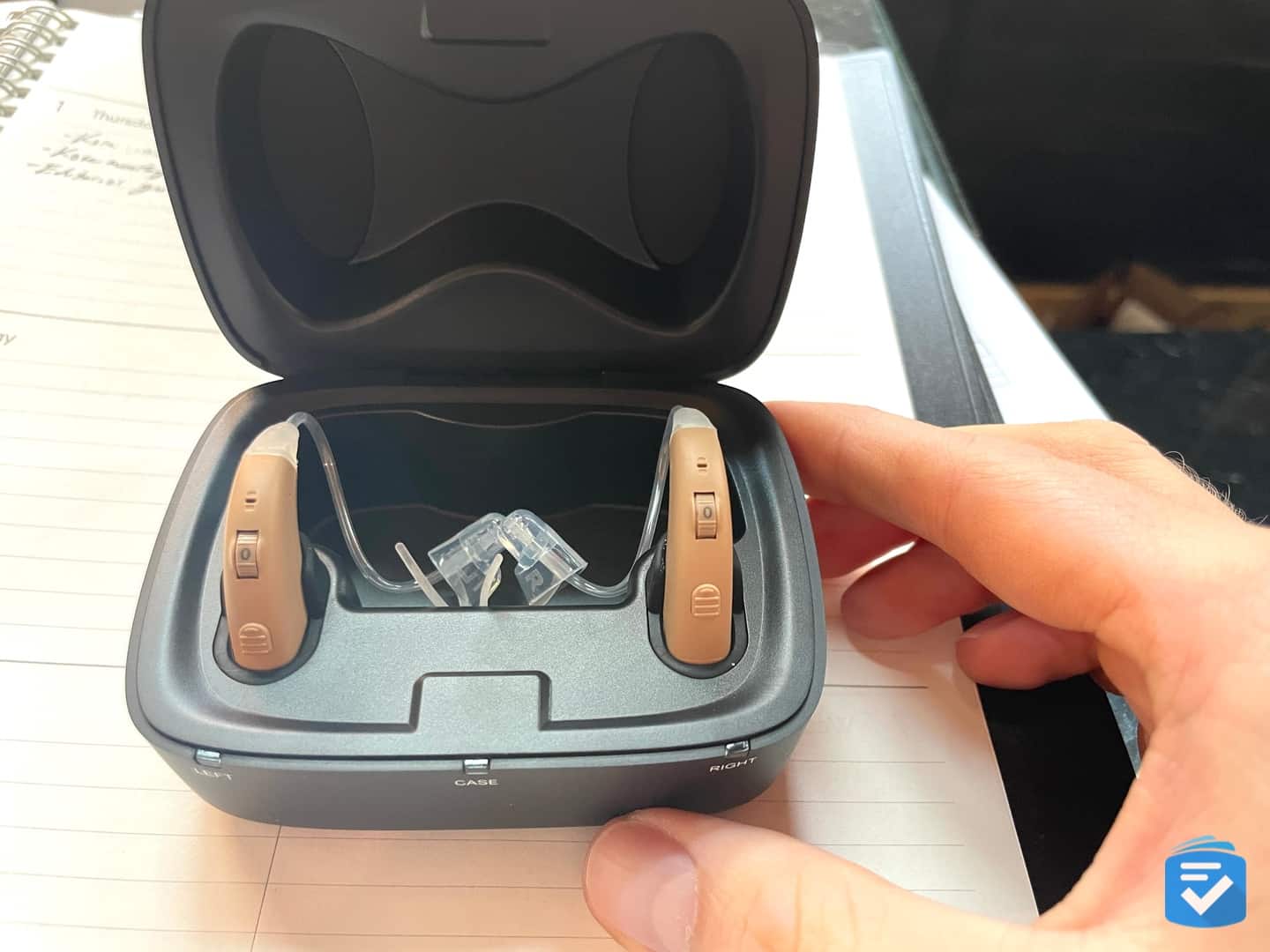
MDHearing VOLT MAX
The flagship VOLT MAX delivers maximum power and advanced features for users with mild-to-moderate hearing loss. It incorporates sophisticated adaptive directionality and noise management systems. The device offers multiple programs optimized for different environments and includes advanced feedback suppression for high-power output.
It also features smartphone connectivity, enabling detailed customization of one’s devices. While larger than some models, the size accommodates powerful components and larger controls. It’s particularly suitable for users who require significant amplification but don’t want to sacrifice sound quality.

MDHearing Device Comparison
| MDHearing Device | AIR | NEO | NEO XS | NEO XS PRO | VOLT 4 | VOLT MAX |
|---|---|---|---|---|---|---|
| Cost for a Pair | $297 | $297 | $297 | $497 | $297 | $497 |
| Fit | Behind-the-Ear | In-Ear | In-Ear | In-Ear | Behind-the-Ear | Behind-the-Ear |
| Battery Life | 16 hours | 17 hours | 18 hours | 18 hours | 20 hours | 15 hours |
| Noise Reduction | Good | Good | Improved | Improved | Advanced | Intelligent |
| Environment Settings | 4 | 1 | 4 | 4 | 4 | 4 |
| Smartphone compatible | No | No | No | Yes | No | Yes |
MDHearing Returns and Warranties
Every MDHearing device comes with a standard one-year warranty, which will protect your hearing aids in the event of any manufacturer defects. After this period, however, the user will be responsible for the costs of repairs or device replacement.
In the case of the VOLT MAX and the NEO XS PRO, you can pay $200 extra for the VIP Care package. This extends the warranty to two years, gives you access to a priority customer care line, and allows for personalized follow-up care with licensed hearing professionals. Unfortunately, this VIP Care package is not available with the other models.
Another feature that allows MDHearing to stand out from competitors includes the option to purchase an MDShield Protection Plan that offers full device accidental damage coverage for one or two additional years. The cost is either $12 extra for basic protection, or $19 a month for protection and loss. Customers also get access to free one-on-one phone support, and the company offers individual support from their MDHearing audiologists.
Our Verdict
MDHearing’s devices are developed and designed by a team of audiologists and doctors who utilize their knowledge and experience to create high-quality hearing aids at very affordable prices. Their mission is to offer consumers the latest and most effective technology at a fraction of the expense of rival companies’ comparable models. This allows some individuals who might not otherwise be able to afford quality hearing aids to enjoy all the benefits they provide.
To learn more about insurance and hearing aids, read our guide: Does Insurance Cover Hearing Aids?
To purchase a hearing aid from MDHearing, you can start by visiting their website. There, you’ll be able to look at their different models. You’ll also be able to take an online hearing test. Upon completing this exam, you’ll be presented with various options that best meet your hearing needs.
To learn more about MDHearing, be sure to check out our MDHearing review.
Frequently Asked Questions
-
How do I know if MDHearing hearing aids will work for my hearing loss?
MDHearing devices are designed for people with mild to moderate hearing loss. Before purchasing, you can take MDHearing’s free online hearing test on their website, which will help determine if their devices suit your hearing needs. For severe hearing loss, you should consult with an audiologist.
-
Do MDHearing hearing aids require a prescription or hearing test?
No, MDHearing aids are FDA-registered over-the-counter (OTC) hearing devices that can be purchased directly from their website without a prescription or in-person hearing test. While their online hearing test can help guide your selection, it’s not mandatory for purchase.
-
How long does the 45-day trial period work?
The 45-day trial period begins once you receive your hearing aids. During this time, you can test your hearing aids in various environments to determine if they meet your needs. If you’re unsatisfied, you can return the devices for a full refund within this timeframe. MDHearing recommends giving yourself at least 21 days to adjust to your new hearing aids before making a final decision.
-
How do I maintain and clean my MDHearing hearing aids?
To extend the life of your MDHearing devices, clean them regularly with the included cleaning tools. For behind-the-ear models (AIR, VOLT, and VOLT MAX), wipe the device with a dry cloth and use the brush to remove debris. For in-ear models (NEO and NEO XS), remove earwax from the speaker with the included cleaning tool. MDHearing also recommends storing your devices in a dry, cool place when not in use.
-
Can MDHearing hearing aids connect to my TV or phone for audio streaming?
None of MDHearing’s devices offer direct Bluetooth connectivity for audio streaming from phones or TVs. Only the VOLT MAX and NEO XS PRO models offer smartphone adjustments through the MDHearing app, but it doesn’t support direct audio streaming. If you’re specifically looking for hearing aids with streaming capabilities, you may want to consider other brands specializing in this feature, though they typically cost more.


